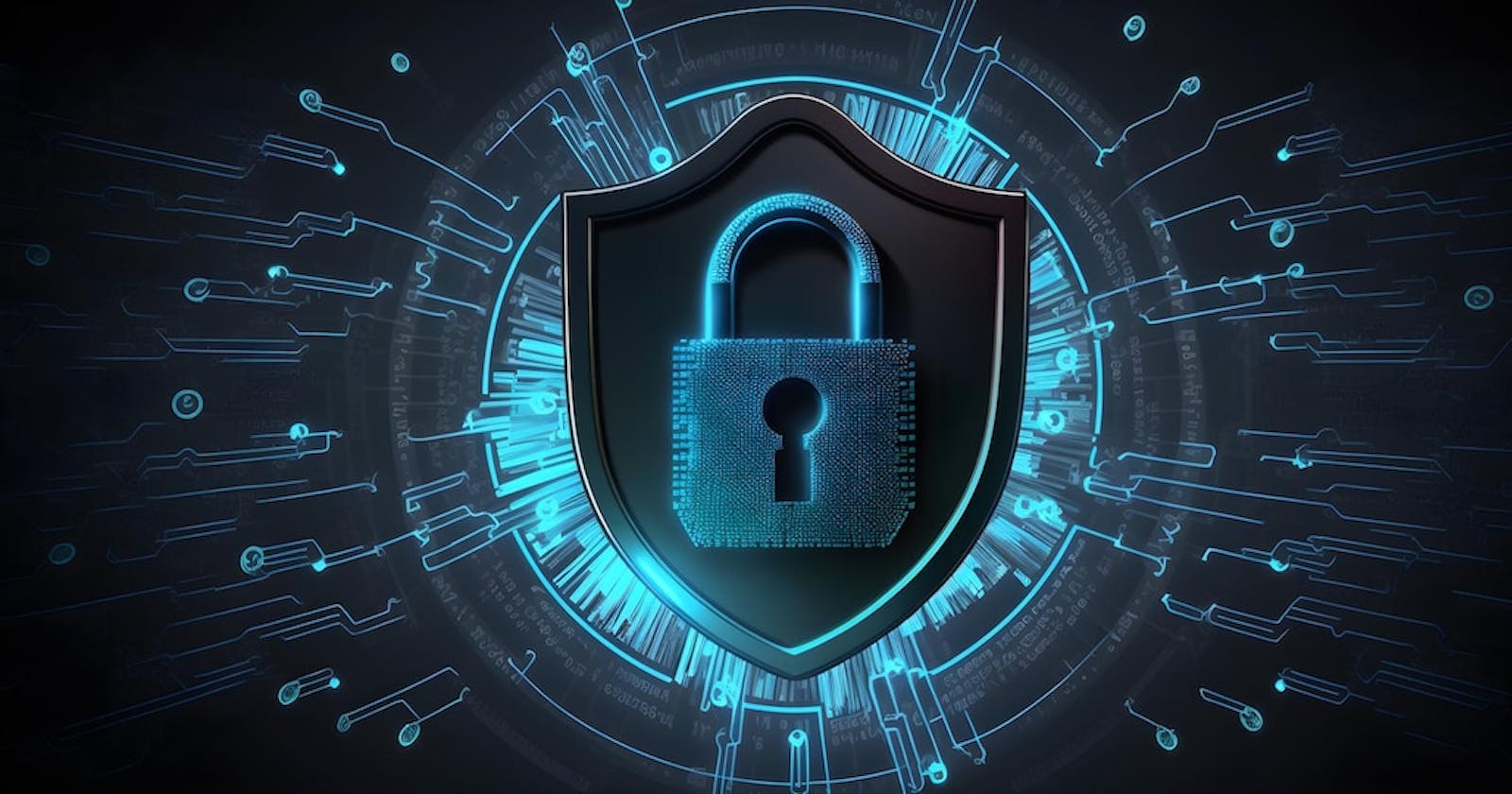Protecting Your Business: How to Safeguard Against Data Breaches and Cyber Attacks🛡🌐
Table of contents
- Understanding Data Breaches and Cyber Attacks
- The Impact of Data Breaches on Businesses
- Common Types of Data Breaches and Cyber Attacks
- The Importance of Data Security and Risk Assessment
- Best Practices for Safeguarding Against Data Breaches and Cyber Attacks
- The Role of Cybersecurity Insurance
- Working with Cybersecurity Professionals and Experts
- Staying Informed About the Latest Threats and Trends
- Conclusion
As a business owner, one of the most critical aspects of running a successful company is safeguarding your data against potential breaches and cyber attacks. In today's digital age, data breaches have become increasingly common, and the consequences can be devastating for businesses of all sizes. In this article, we will explore the various types of data breaches and cyber attacks, understand their impact on businesses, and discuss best practices for protecting your valuable information.
Understanding Data Breaches and Cyber Attacks
Before diving into the strategies for safeguarding your business, it is essential to have a clear understanding of what a data breach actually entails. A data breach occurs when unauthorized individuals gain access to sensitive information, such as customer data, financial records, or intellectual property. These breaches can happen through various means, including hacking, phishing, malware, or even physical theft of devices.
Cyber attacks, on the other hand, encompass a broader range of malicious activities aimed at compromising the security and integrity of computer systems. These attacks can target businesses for financial gain, espionage, or simply to cause disruption. It is crucial to recognize that data breaches are just one type of cyber attack, albeit one with severe implications for businesses.
The Impact of Data Breaches on Businesses
The impact of a data breach on a business can be far-reaching and long-lasting. Apart from the immediate financial losses resulting from theft or damage to data, businesses also face reputational damage and loss of customer trust. A data breach can lead to legal consequences, such as fines or lawsuits, as companies are often legally obliged to protect customer data.
Furthermore, the time and effort required to recover from a data breach can be significant, diverting resources away from core business activities. The cost of implementing additional security measures, conducting forensic investigations, and repairing damaged systems can be substantial. Therefore, it is crucial for businesses to take proactive steps to prevent data breaches and minimize the potential impact.
Common Types of Data Breaches and Cyber Attacks
To effectively safeguard your business, it is essential to understand the different types of data breaches and cyber attacks that can occur. Some common types include:
1. Phishing Attacks: Phishing attacks involve tricking individuals into revealing sensitive information, such as passwords or credit card details, by posing as a trustworthy entity. These attacks often occur through deceptive emails or websites.
2. Malware Infections: Malware refers to malicious software designed to disrupt computer systems, steal information, or gain unauthorized access. Common forms of malware include viruses, ransomware, and spyware.
3. Insider Threats: Data breaches can also occur due to internal factors, such as disgruntled employees or individuals with unauthorized access to sensitive information. These insider threats can be intentional or accidental.
4. Distributed Denial of Service (DDoS) Attacks: DDoS attacks overwhelm a system or network with a flood of traffic, rendering it inaccessible to legitimate users. This type of attack is often used to disrupt services or extort money from businesses.
Understanding these common types of data breaches and cyber attacks is the first step towards implementing effective security measures. In the following sections, we will explore best practices for safeguarding your business against these threats.
The Importance of Data Security and Risk Assessment
Protecting your business against data breaches and cyber attacks begins with understanding your vulnerabilities and potential risks. Conducting a comprehensive risk assessment allows you to identify the critical assets, potential threats, and vulnerabilities within your organization. This assessment should cover both technical and non-technical aspects, including your IT infrastructure, physical security measures, and employee practices.Once you have identified the risks, it is crucial to develop a robust data security strategy. This strategy should encompass preventive measures, detection and monitoring systems, incident response plans, and recovery procedures. By taking a proactive approach to data security, you can significantly reduce the likelihood and impact of data breaches and cyber attacks.
Best Practices for Safeguarding Against Data Breaches and Cyber Attacks
Implementing strong passwords and two-factor authentication is one of the fundamental steps towards protecting your business from unauthorized access. Strong passwords should be complex, unique, and regularly updated. Two-factor authentication adds an extra layer of security by requiring users to verify their identity through a second method, such as a mobile app or SMS code.
Regularly updating and patching software and systems is another critical practice for safeguarding your business. Software vendors regularly release updates and patches to address security vulnerabilities. Failing to install these updates promptly can leave your systems exposed to known threats.
Employee training and awareness programs are invaluable for preventing data breaches and cyber attacks. Educate your staff about the risks associated with phishing attempts, the importance of secure password practices, and how to identify potential security threats. Regular training sessions and simulated phishing exercises can help keep security practices top of mind for your employees.
Encryption and data backup strategies are essential components of a robust data security plan. Encrypting sensitive data ensures that even if it falls into the wrong hands, it remains unreadable without the encryption key. Regularly backing up your data and storing it securely off-site ensures that you can recover quickly in the event of a breach or system failure.
Monitoring and detecting data breaches is crucial for timely response and mitigation. Implement intrusion detection and prevention systems, log monitoring, and real-time threat intelligence tools to identify any suspicious activities or indicators of compromise. Early detection can significantly reduce the impact of a breach by allowing immediate action to be taken.Responding to and recovering from data breaches requires a well-defined incident response plan. This plan should include procedures for investigating the breach, notifying affected individuals or authorities, containing the incident, and recovering affected systems. Having a tested and documented plan in place ensures a coordinated and efficient response, minimizing the potential damage.
The Role of Cybersecurity Insurance
In today's rapidly evolving threat landscape, cybersecurity insurance has become an essential component of a comprehensive risk management strategy. Cyber insurance policies provide coverage for financial losses, legal expenses, and other costs associated with data breaches and cyber attacks. It is crucial to work with insurance providers specializing in cybersecurity to ensure that your policy adequately covers your specific risks and requirements.
Working with Cybersecurity Professionals and Experts
While it's essential to have a basic understanding of data security, partnering with cybersecurity professionals can provide invaluable expertise and guidance. These professionals can conduct thorough security assessments, develop tailored security strategies, and assist with incident response and recovery. Engaging the services of experts in the field ensures that your business benefits from the latest knowledge and best practices.
Staying Informed About the Latest Threats and Trends
The landscape of data breaches and cyber attacks is constantly evolving, with new threats emerging regularly. Staying informed about the latest trends, vulnerabilities, and security technologies is crucial for maintaining an effective defense posture. Regularly monitor industry publications, attend cybersecurity conferences, and engage in professional networks to stay up to date with the ever-changing threat landscape.
Conclusion
Protecting your business against data breaches and cyber attacks is not an option; it is an absolute necessity. The impact of a breach can be devastating, both financially and reputationally. By understanding the types of breaches and attacks, implementing best practices, and working with cybersecurity professionals, you can significantly reduce the risk of falling victim to these threats. Remember, data security is an ongoing process, requiring constant vigilance and adaptability to stay one step ahead of cybercriminals. Safeguard your business today and ensure a secure future.

